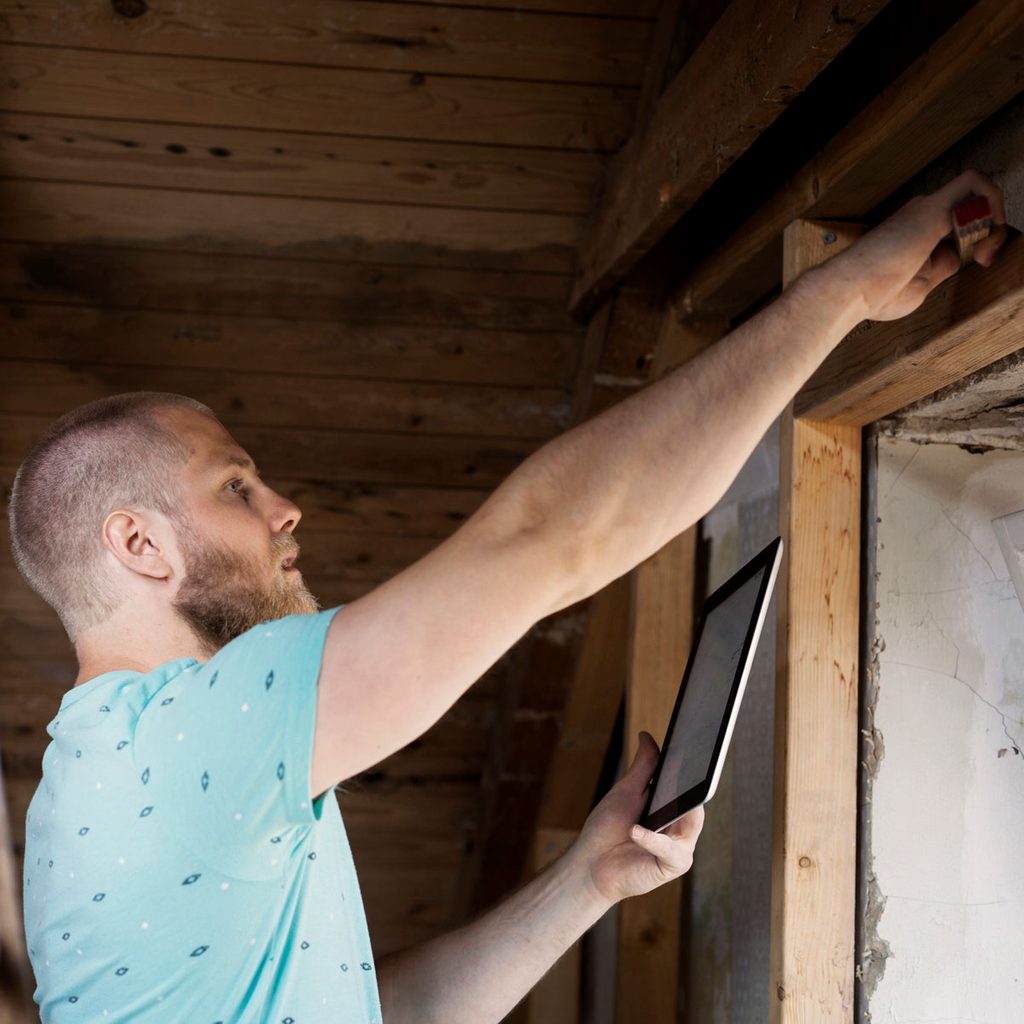Attic Inspection Checklist (Plus DIY Inspection Tips)
Updated: Nov. 03, 2023

When the seasons change, it's time to inspect your attic! Know what to look for with this expert-approved attic inspection checklist.
The attic is a vital part of your healthy, functioning home. Certified home inspector Brian Cooper, owner of Cooper Inspection Services, LLC, says that an attic inspection can help head off pest problems, spot money-sucking heating and cooling inefficiencies and more. He recommends setting aside about an hour for an attic walk-through twice a year, ideally in the spring and fall.
Whether you do it yourself or call in a pro, these are the main items that should be addressed during an attic inspection.
On This Page
Ventilation
Adequate ventilation is key, and one of the first things looked at in an attic inspection. Cooper says attics must be properly ventilated so the roof and attic can “breathe.”
“Signs of poor ventilation include, mold, rusted nails and condensation — typically in the winter — on sheathing,” Cooper says. “In the heat of the summer, you want an attic temperature that is cooler than 110 degrees F.”
Pro Tip: The most efficient way to improve ventilation is with soffit and ridge vents, Cooper says. The soffit/ridge combination takes air from the lowest point of the attic (soffit) and exhausts it through the highest point/peak (ridge) of the attic.
Insulation
Attic insulation plays a big part in regulating the overall temperature of your home. A drafty upstairs, especially at the entrance to the attic, can indicate a need for more insulation.
During an inspection, Cooper would also use a thermal imaging camera to detect a change in temperature. He checks for sufficient insulation depth and any spots where insulation is missing. Insulation can settle in older homes, he says, and so it may be necessary to add more insulation.
Pro Tip: A quick way to determine if you need more insulation is to look across the span of your attic. If your insulation is just level with or below your floor joists, you should add more.
Leaks
A leaking roof is evidenced by water stains, rot or mold in the attic, especially on the sheathing. However, leaks don’t always come from a hole in the roof or damaged shingles, Cooper says.
“Leaks in the attic are most common around vents, plumbing stacks, radon systems and even the chimney,” he says. “Over time, the tar used to seal the chimney flashing can deteriorate, causing leaks into the attic.”
It’s possible to repair any minor leaks on your own, especially if you have a one-story, low-slope roof. However, Cooper notes that most leaks will require someone to get on the roof. In that case, he advises having a professional repair any major issues.
Pests
Droppings, nests, leaves, acorns and damage to insulation are indicative of a pest problem. “Vermin can easily come in through any gaps in the soffit. An attic inspection will help identify any entryways for pests,” Cooper says.
Pro Tip: There are strict rules in many states regarding the removal of certain pests, like bats. They cannot be removed with poison and are protected during certain times of the year. Installing exclusion doors will allow bats already in the attic to escape, but will not let them back in. Trapping and removing rodents, and then sealing off any entryways, is the best way to remove and prevent rodents from returning. Bigger pests like raccoons or large snakes should be handled by professionals.
Exhaust Ducts and Vent Stacks
All exhaust ducts and vent stacks should continue through the roof to the outside, but that isn’t always the case. Cooper says he commonly sees bathroom fans vented directly into the attic.
“Bathroom vent fans must vent to the exterior of the home, whether it’s through the roof or an exterior wall,” he says. “Venting moisture into the attic will create condensation on the roof framing members and insulation. In a poorly vented attic, this can also lead to mold growth.”
The fix? Cooper recommends extending vents to terminate outside the home or installing a vent hood on the roof.
When inspecting ducts and pipes that are vented to the exterior of the home, ensure they’re not cracked, loose or damaged. Cooper also advises against anything leaning on the pipe or ducts.
DIY Attic Inspection Tips
Cooper’s tips to help you perform a DIY attic inspection:
- Do your inspection on a rainy day, which makes it easier to spot any active leaks.
- Wait to turn on any lights when you get into the attic so you can identify any areas where daylight may be coming in, which could indicate possible leaks or holes.
- Gear up with safety glasses, a dust mask and a hard hat or cap, to protect your head from beams and nails.
- Measure any changes in temperature in or around the attic with an inexpensive thermal camera.
- Use a tape measure to check insulation levels
- DO NOT walk on exposed ceiling drywall or insulation or you’ll risk falling through the ceiling. Walk on joists or lay a piece of plywood across the rafters to better distribute your weight.
- Take photos during your inspection, focusing on potential problem areas you can reference later.
